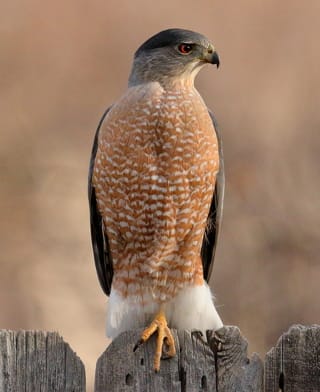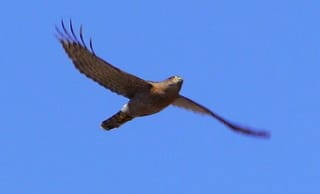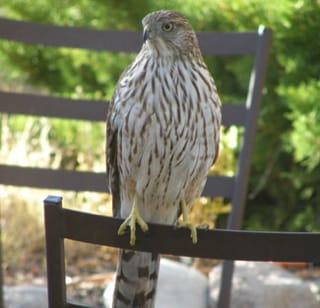Initially this guide displays common birds of all types that are flying right now in our area. Use the selectors below to view rare birds, view birds flying any time, restrict the output to a certain shape of bird, or search by name.
New Mexico is on the western edge of the Central Flyway which is one of the major migration pathways between north and south for birds traveling between breeding and wintering grounds along the Rocky Mountains. This has resulted in the state having an incredible diversity of birds with over 550 different species reported. A little more than half of this number are sighted annually on the Pajarito Plateau. Some of these birds are full-time residents, some migrate here for a few weeks or months, and other are only seen briefly as they pass through the region.
This guide features many of the birds known to frequent Los Alamos county by when they are likely to be seen in the area. You can get additional information on local birds by joining PEEC Birders or going to the eBird website. eBird also includes lists of rare bird sightings and birding hot spots.
Bird References
Birdweb
Cornell Lab of Ornithology
eBird
eNature
Institute for Bird Populations
National Audubon Society
New Mexico Ornithology Society
What Bird
xeno-canto
Subject Area Experts (all guides)
Steve Cary (butterflies)
Beth Cortright (insects)
Terry Foxx (invasive plants)
Leslie Hansen (mammals)
Richard Hansen (fish, mammals)
Dorothy Hoard (butterflies, trees)
Chick Keller (flowers, herbarium)
Shari Kelley (geology)
Kirt Kempter (geology)
Garth Tietjen (reptiles)
David Yeamans (birds)
Web Development and Content Management
Pat Bacha
Jennifer Macke
Graham Mark
Akkana Peck
Contact
Please contact us for local nature questions and sightings. We welcome comments, corrections, and additions to our guides.
For more information about local nature, please visit our Nature Blog or subscribe to PEEC This Week.
Make Selection
 Photo: adult by Bob Walker  Photo: adult by Judith Lopez Sikora  Photo: immature by Chick Keller |  Cooper's HawkCOHA (Accipiter cooperii)Family: Accipitridae (Hawks and Eagles) Size: 14 - 21 in (36 - 53 cm) Flies: Jan 01 - Dec 31 Morphology: looks like a Sharp-shinned hawk but larger; adults of both sexes are blue-gray above with reddish bars on the breast; females are larger than males; young birds are brown above, streaked with brown on the breast, and have yellow eyes Status: native; common Food source: mostly birds and mammals; occasionally reptiles and insects Habitat: forests, especially those interrupted by clearings; currently entering more suburban and urban areas Typical location: Bandelier Cooper’s Hawks have short rounded wings, long tails and small hooked beaks. In flight, they have a long-necked appearance, often referred to as a “flying cross”. They typically use quick, consecutive wing beats and a short glide. They use stealth to capture prey either by swooping down from cover or by flying quickly through dense vegetation. Studies have shown that the later technique, while successful, can be dangerous resulting in broken chest bones. Prey is captured with the bird’s feet. Females build nests high up in trees usually on a foundation of a preexisting nest. The eggs are incubated for a little over a month. The young will climb around the nest tree at about four weeks of age. They will be able to fly soon thereafter, but will stay with their parents for another month. Info Photos Range Frequency |
